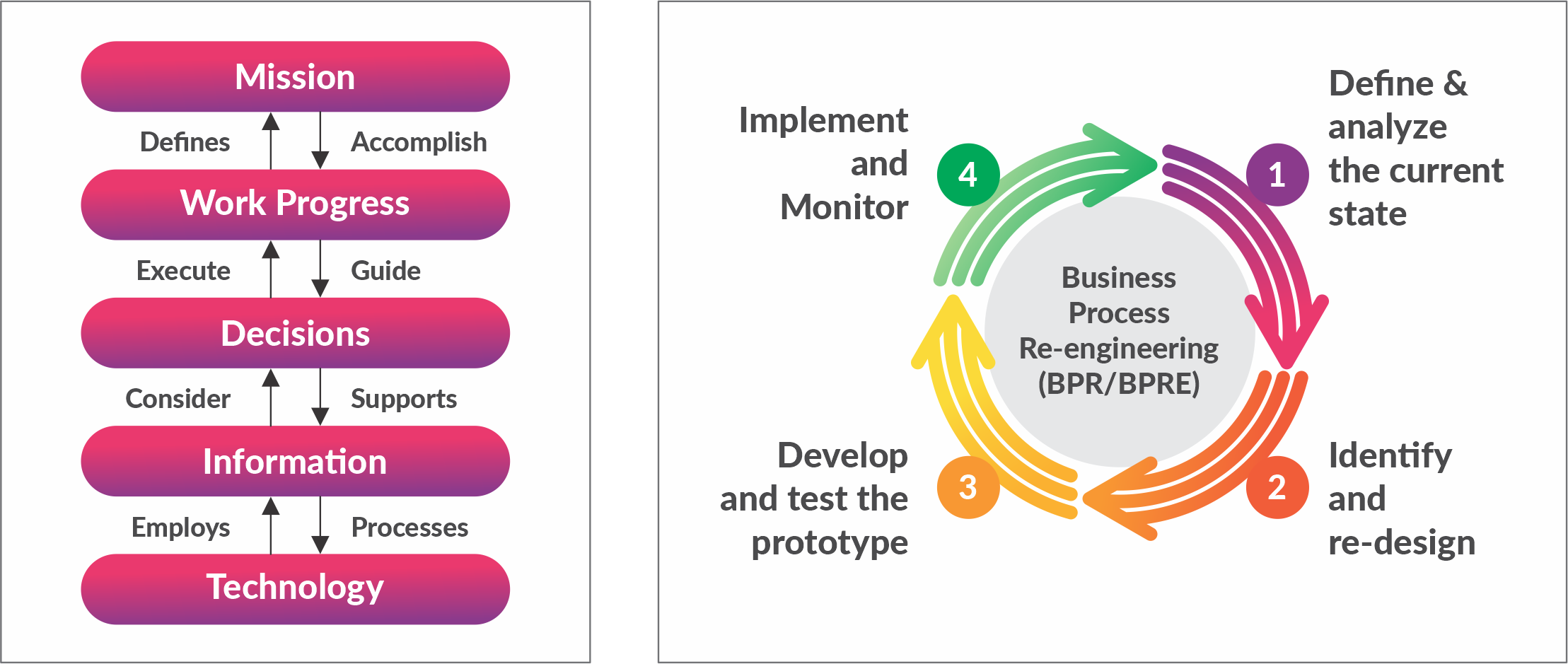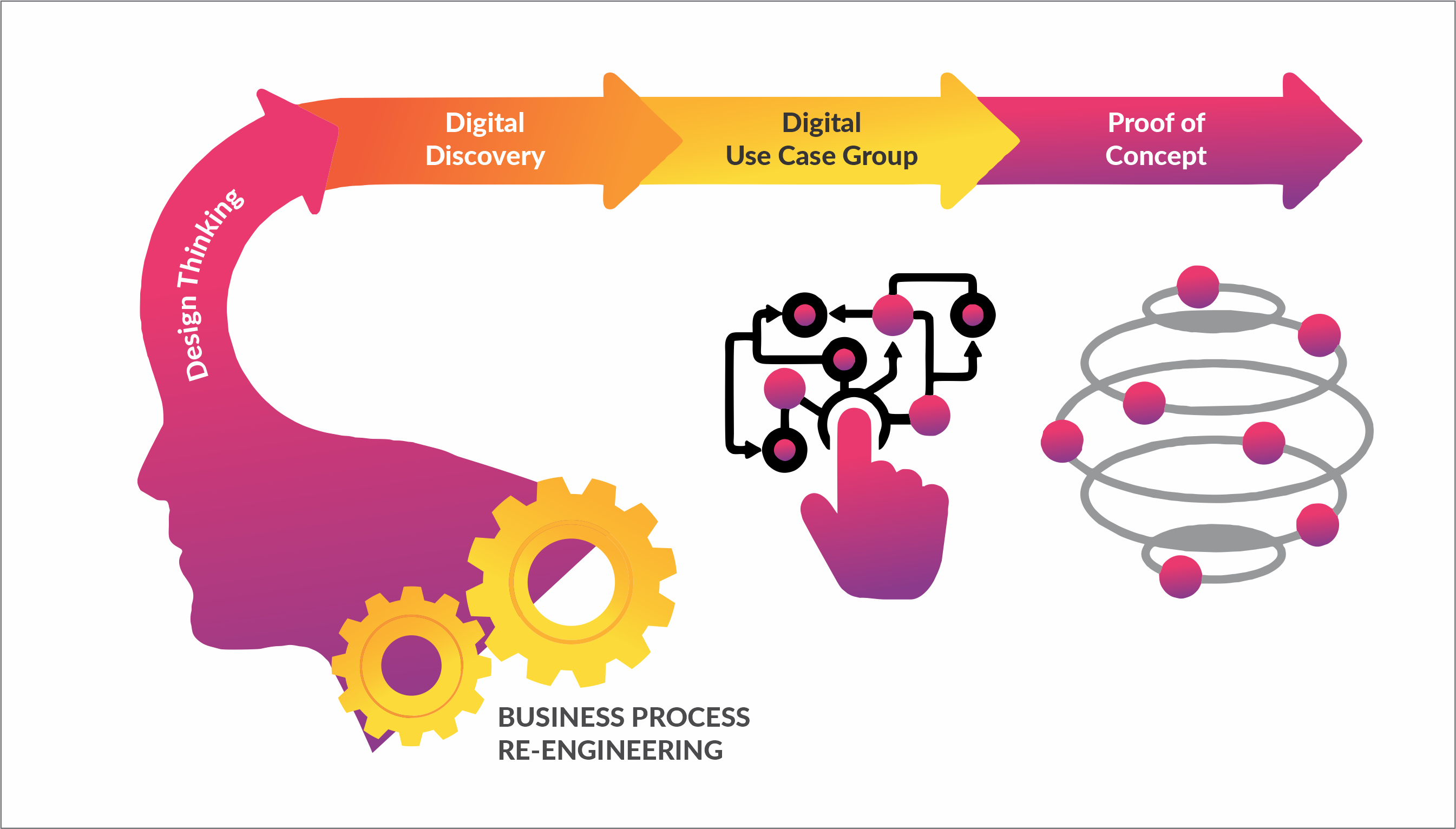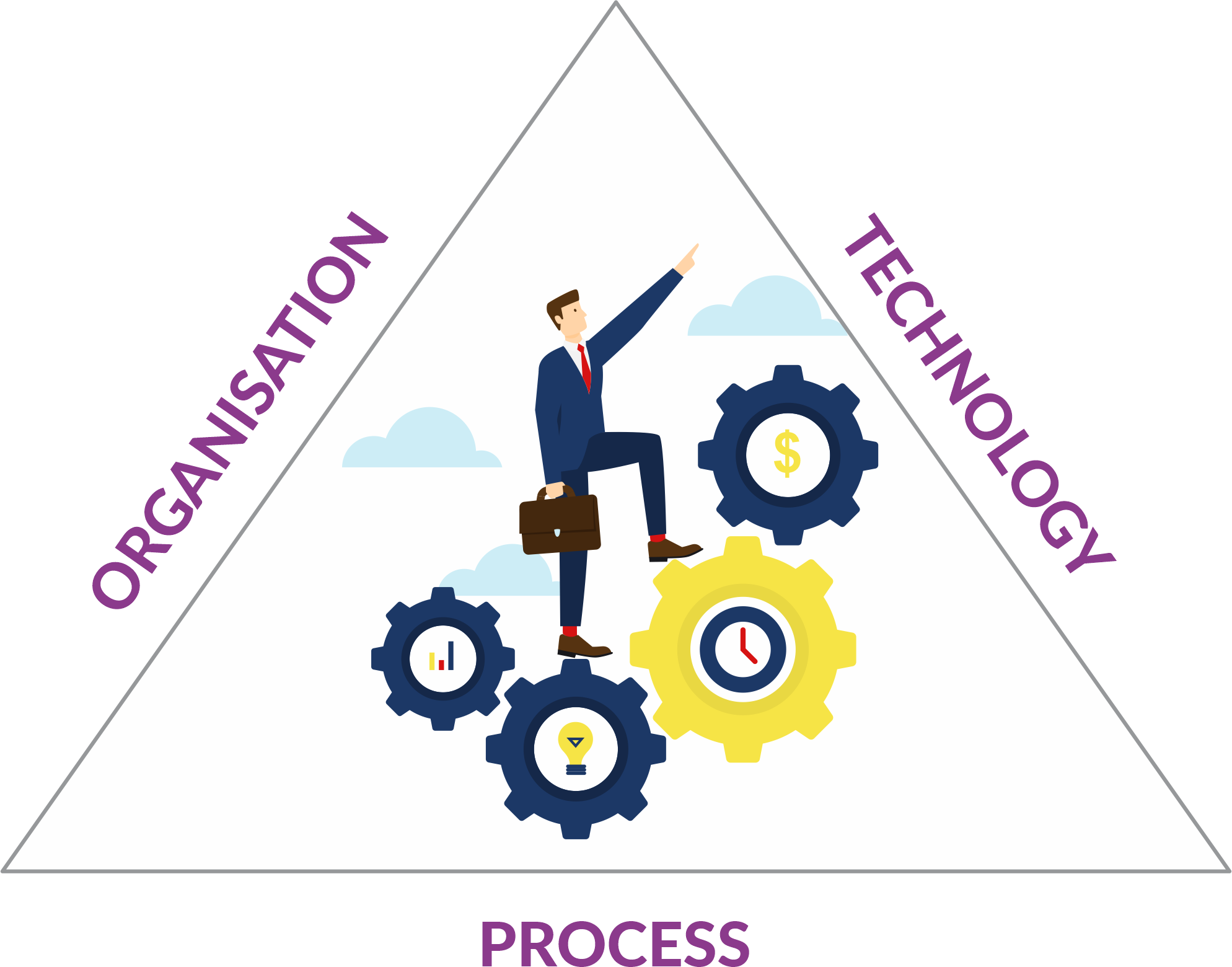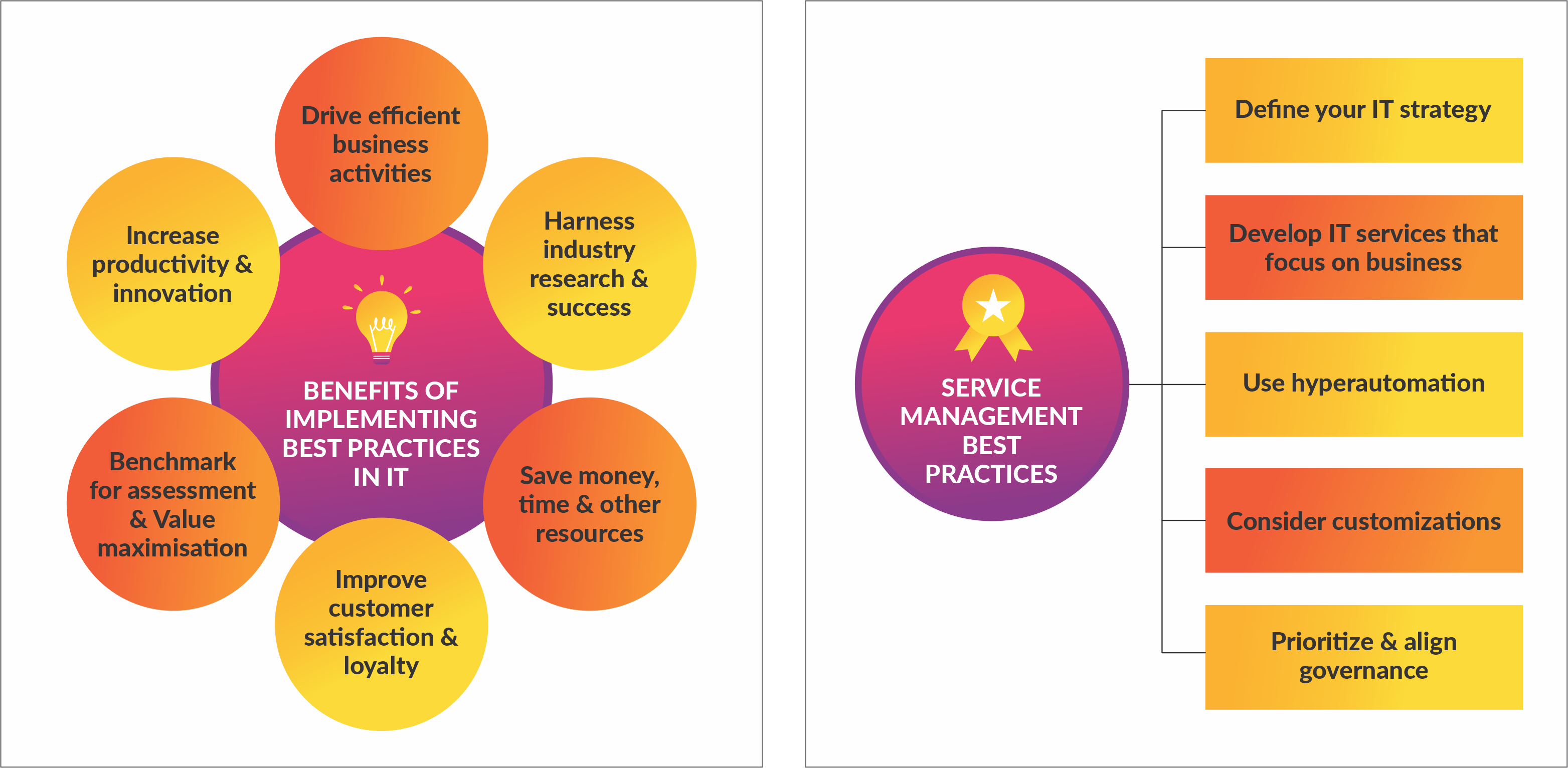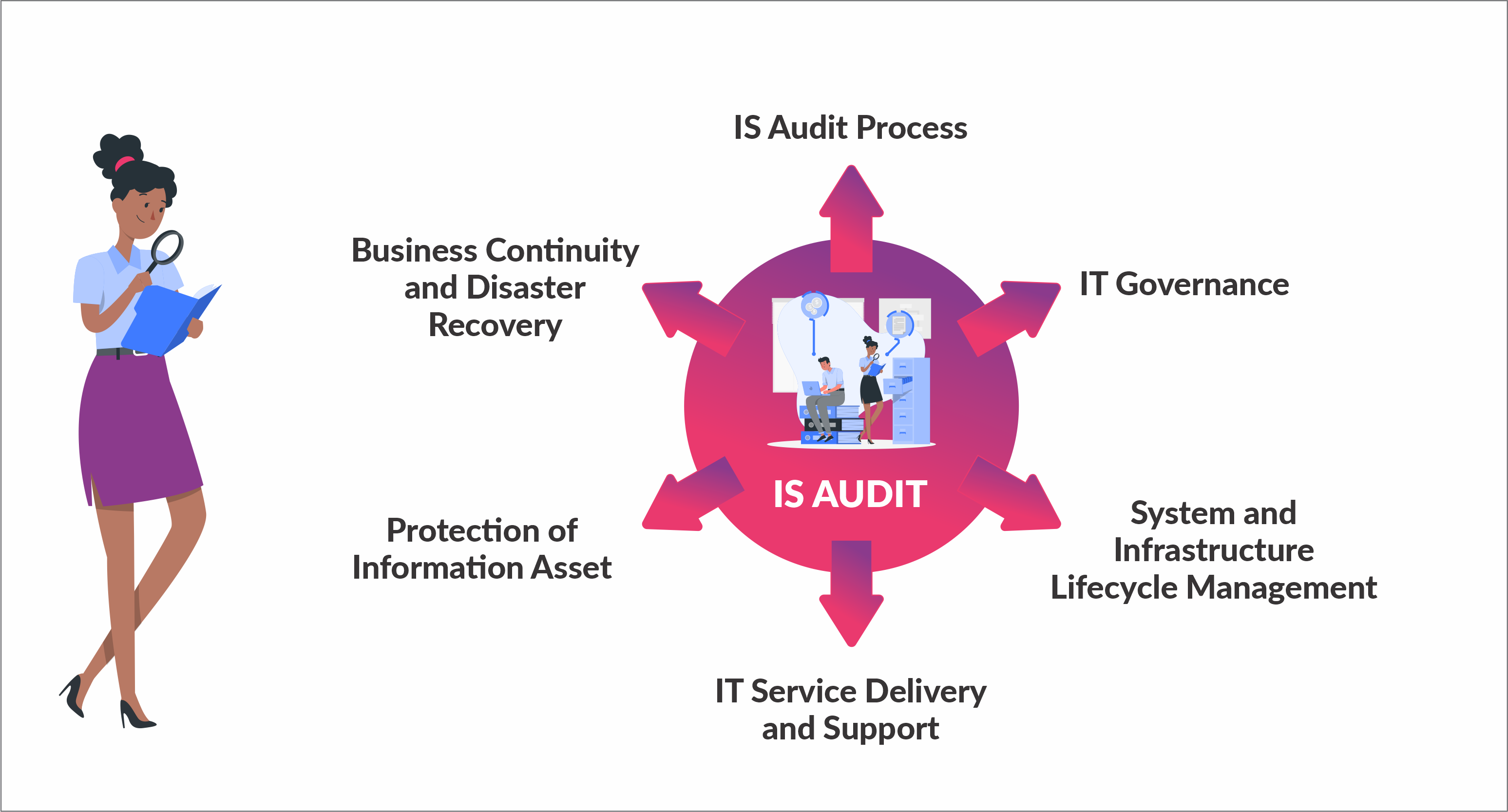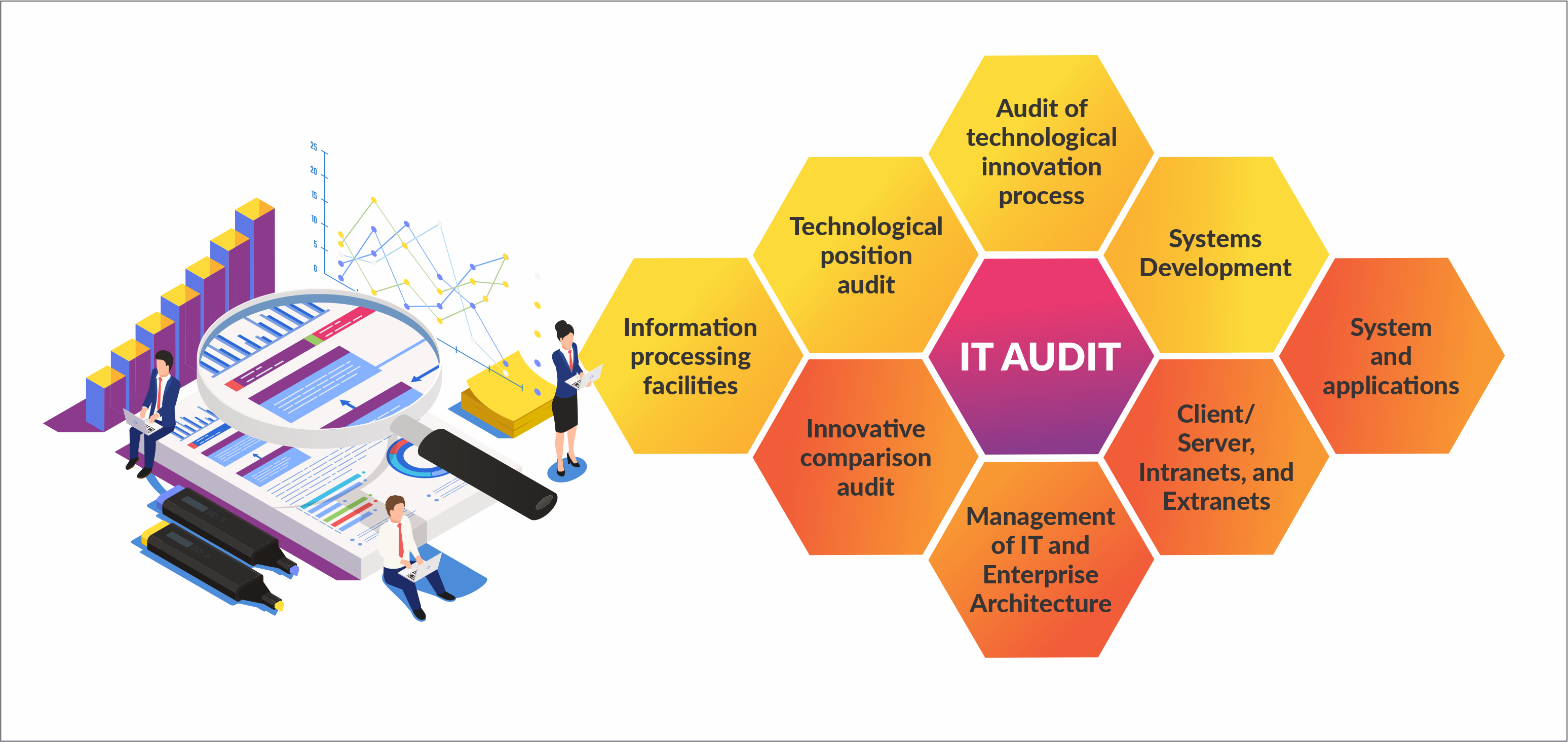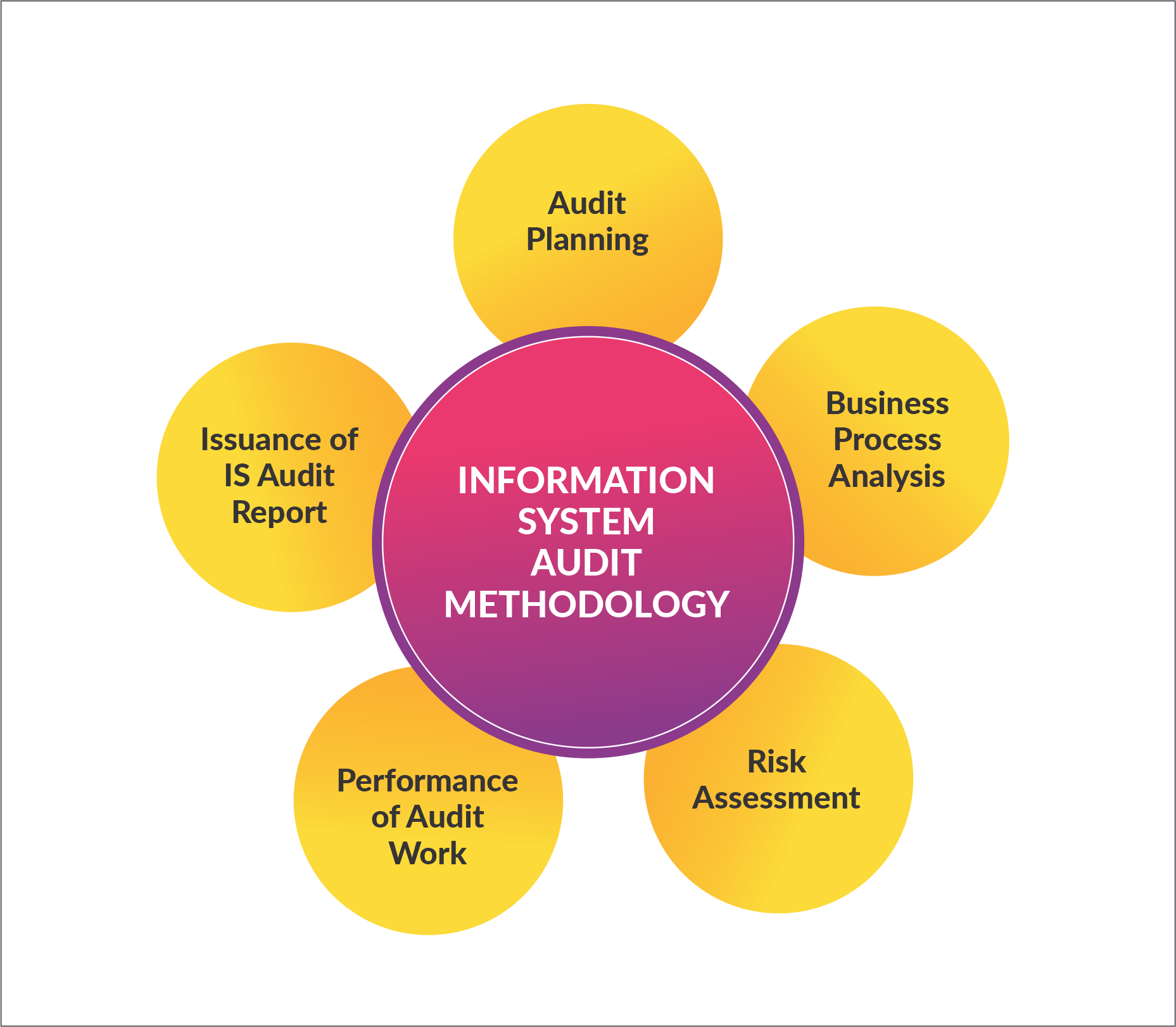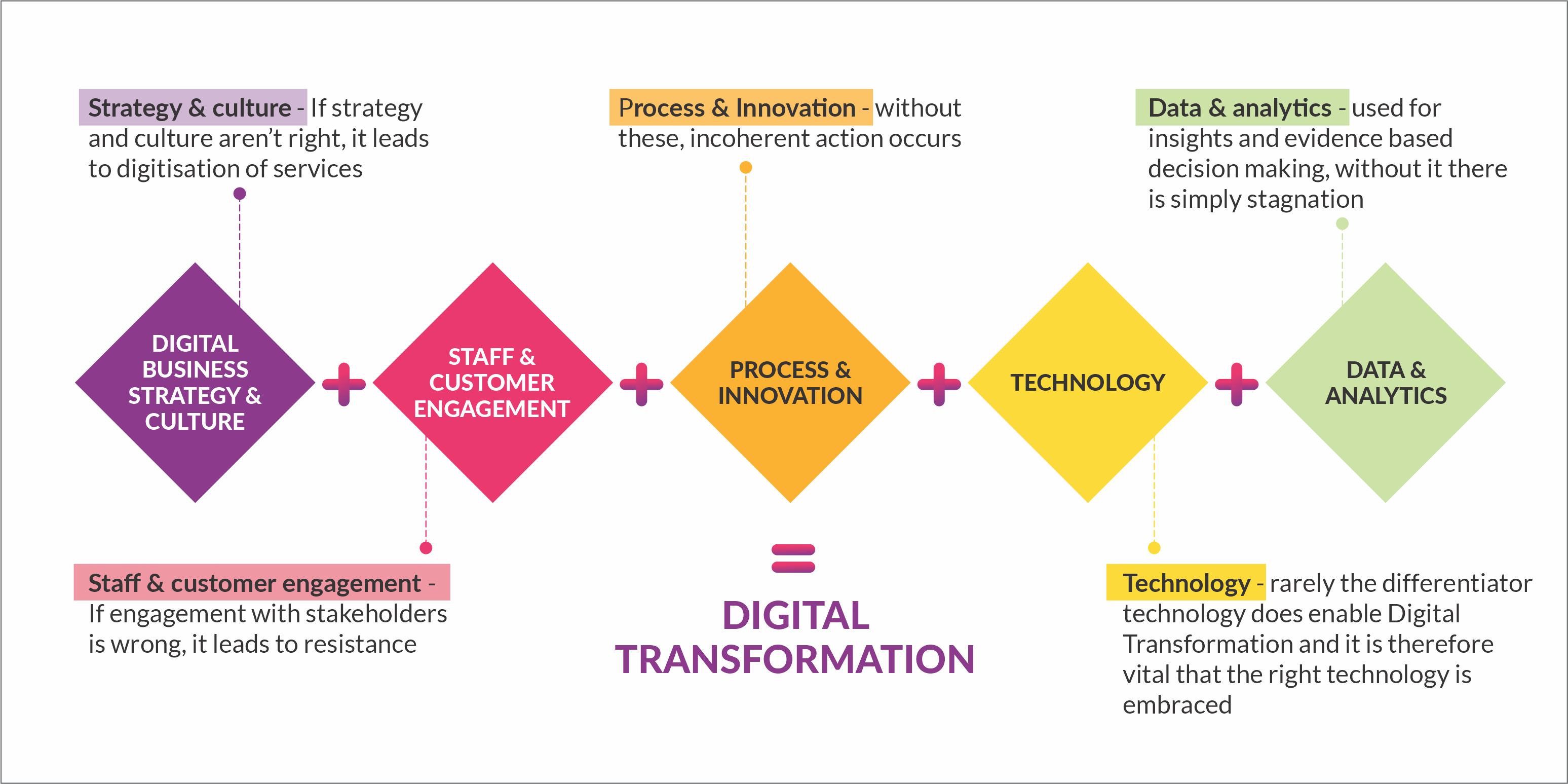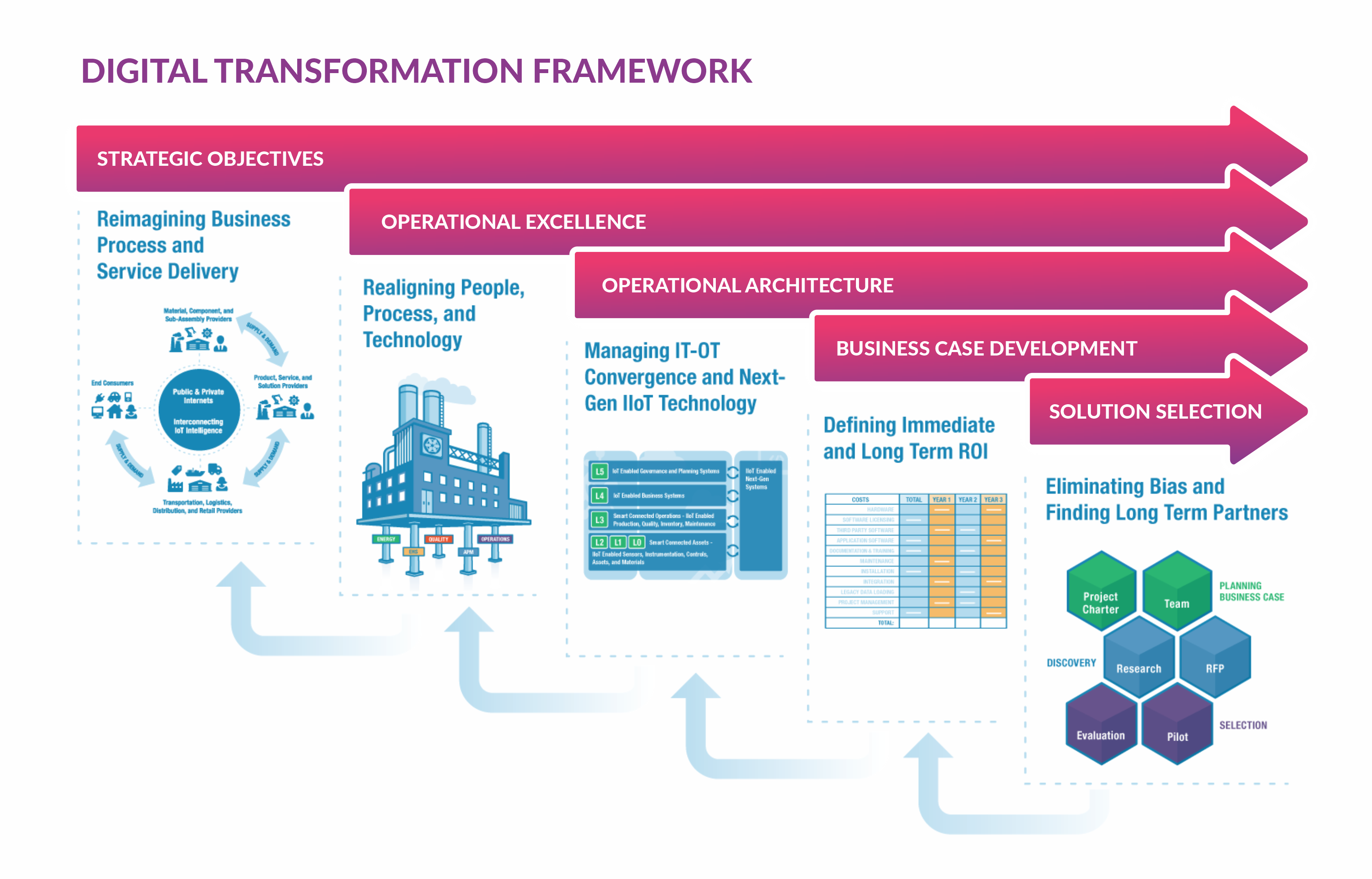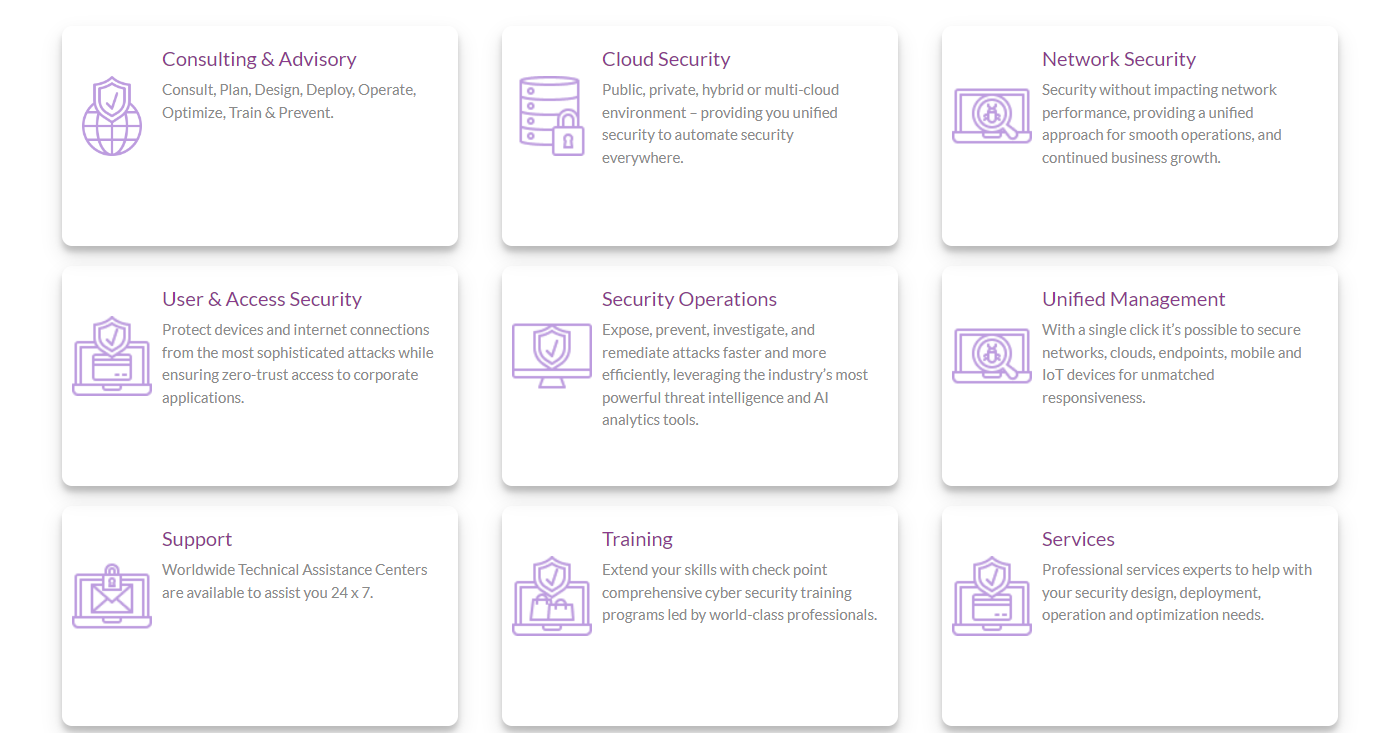Business Process Engineering
Business Process Engineering is a successive and ongoing process and should be regarded as an improvement strategy that enables an organization to make the move from a traditional functional orientation to one that aligns with strategic business processes.
- Continuous improvement is defined as the propensity of the organization to pursue incremental and innovative improvements in its processes, products, and services.
- It is essential that the automation infrastructure of the BPR activity provides for performance measurements in order to support continuous improvements. It will need to efficiently capture appropriate data and allow access to appropriate individuals.
- To ensure that the process generates the desired benefits, it must be tested before it is deployed to the end-users. If it does not perform satisfactorily, more time should be taken to modify the process until it does.
- At the end user`'`s level, there must be a proactive feedback mechanism that provides for and facilitates resolutions of problems and issues. This will also contribute to a continuous risk assessment and evaluation which are needed throughout the implementation process to deal with any risks at their initial state and to ensure the success of the reengineering efforts.
- Anticipating and planning for risk handling is important for dealing effectively with any risk when it first occurs and as early as possible in the BPR process. It is interesting that many of the successful applications of reengineering described by its proponents are in organizations practicing continuous improvement programs.
In conclusion, successful BPR can potentially create substantial improvements in the way organizations do business and can actually produce fundamental improvements for business operations. However, in order to achieve that, there are some key success factors that must be taken into consideration when performing BPR.
Supply Chain Management
Smart Digital Operations
Manufacturing (Industry 4.0) | Procurement | Supply Chain | Logistics | After Market Services
Quadrafort’s comprehensive Digital Operations Services encompass a suite of Technology, Automation, and Analytics solutions designed to facilitate enterprise-wide end-to-end digital transformation of your Operations. With our extensive domain consulting expertise, along with the support of a range of technology partners, we are committed to deliver technology and business process services to support your digital transformation journey. Our offerings include a range of solutions that can be customized to meet your specific requirements, enabling you to optimize your operations and drive better business outcomes.
Industry best practices
- Best practices are the working standards or ethical guidelines that provide the best course(s) of action in a given situation.
- Companies, regulators, or governing bodies can all set best practices for businesses.
- Best practices serve as a roadmap for a company on how to do business and provide the best way to deal with problems and issues that arise.
- Steps to setting best practices include researching the industry and competitors, communicating the standards to all employees, setting metrics, managing change, evaluating and refining the best practices.
- Two common best practices that have been implemented for inventory management include `"`just in time`"` and `"`kaizen.`"`
Steps for Developing Best Practices
Here are eight steps for developing best practices:
- Do your homework: Research what companies in your industry do regarding best practices, in terms of customer service, hiring, promotions, production, and anything else of import.
- Share your information: Once you have determined what best practices are important, communicate this to key individuals in your company so that everyone is on the same page.
- Define your metrics: When you determine your best practices make sure they are measurable so you can keep track of progress towards their implementation, and to boost accountability.
- Manage change: Employees and others are typically resistant to change. Prepare for this resistance and develop a strategy to move forward when you implement new practices.
- Modify and customize for your business: When implementing a best practice, modify it so that it meets the characteristics of your business and fits with your intended goals.
- Involve everyone: Like sharing your information, make certain that everyone in the organization is aware of best practices and that they have agreed to abide by them.
- Align business and customer needs: Seek guidance from other businesses or customers that might be able to help you refine and better implement your best practices
- Evaluate and refine: As your business evolves, take stock of your best practices and refine if necessary to meet the ways that your organization has changed.
Audit and Optimization
The 6 pillars of well-architected framework for systems audit & optimization include
- Operational Excellence
- Security
- Reliability
- Performance Efficiency
- Cost Optimization
- Sustainability
- Control areas of your SaaS stack without the overhead of maintaining expertise in-house.
- Expand your understanding of potential optimization opportunities, licensing requirements, and financial savings.
- A single, trusted, and highly secure partner – Quadrafort’s global operations are certified to the internationally recognized ISO27001 standard for Information Security Management, for mutual security and peace of mind.
- Quadrafort’s proven partnership approach means working as an extension to your teams, for which trust, professionalism, clear communication and delivering to expectations are paramount
- Cost Optimization
- Sustainability
Innovation and Digital Transformation Strategy
Innovation Vs. Transformation: The Difference In A Digital World - Innovation requires encouragement, collaboration, and communication, but it typically implies clear steps that must be taken—it’s the start of something great. What happens after is transformation—the implementation process following that first spark of innovation. It also suggests an eventual end once the transformation has been completed.
- Digital Transformation can be defined as the process of utilizing modern technology to create new - or modify existing - business processes, culture, and customer experiences.
- This re-imagining of business in the digital age equips organizations with the tools necessary to keep up with competitors and to meet changing market requirements.
- Digital transformation is a clear example of the difference between innovation and transformation. Essentially, digital transformation describes the process by which a company forms a strategy to implement technology to improve business and meet the ever changing demands of the consumer. The goals of a digital transformation can include broadening the company’s reach, improving operational efficiency, transmuting the company’s culture and image, or all the above. Traditional business practices are consistently put to the test in the face of evolving technology, and it’s important for modern companies to recognize technology’s potential and accept when the time for change has come.
If an organization planning to embark on a digital transformation project, then there are four main areas they should consider:
- Process Transformation.
- Business Model Transformation.
- Domain Transformation.
- Cultural/Organisational Digital Transformation.
Risk & Cybersecurity
Protect your enterprise networks from the most sophisticated cyber-attacks with the highest caliber of security, real-time prevention and the world’s highest performing security gateways.Our solutions protect customers from 5th generation cyber-attacks with an industry leading catch rate of malware, ransomware and other types of attacks.
